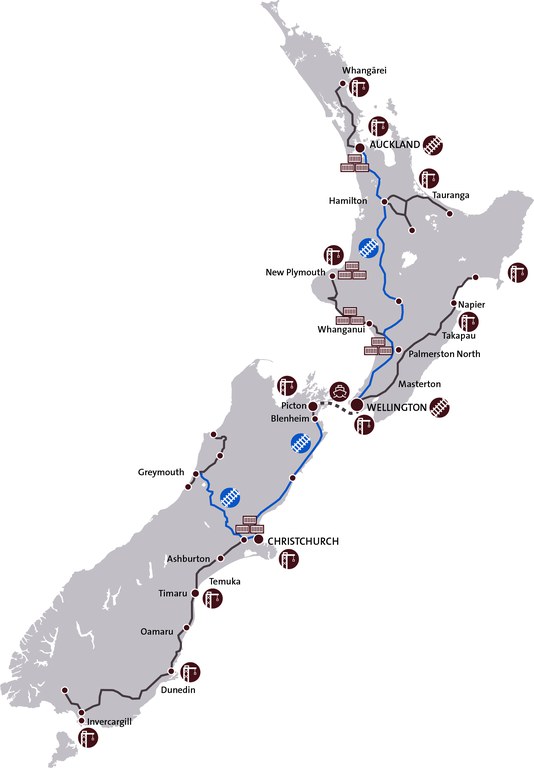The transport system
Transport sector: A case study of sector-level performance
- Public transport services, mainly bus services, are operated by a variety of providers across New Zealand.
- The rail network, for freight and metro rail, includes 3700km of track and associated infrastructure such as bridges and tunnels and is managed by KiwiRail.
- Rail commuter services operate in Auckland and Wellington and three rail tourism services are operated by KiwiRail.
- Freight services for major industries operate across the country, connecting with coastal and inland ports and hubs, and transport around 20% of New Zealand's exports and imports.
- New Zealand has 41 domestic airports, most of which are owned by local authorities, with air traffic management services provided by Airways NZ. The safety and security of road, rail, air and maritime transport is overseen by Waka Kotahi, the Civil Aviation Authority and Maritime NZ. The Transport Accident Investigation Commission investigates transport accidents.
- Interislander ferry services operate between Picton and Wellington, carrying people and freight.
- A range of new technologies, such as autonomous vehicles and wing-in-ground craft (sea gliders), are in various stages of development. These new technologies are likely to play a greater role in the transport system.
- The road network includes 11,000km of state highways and 83,000km of local roads, which are maintained and developed by Waka Kotahi and councils, respectively. Walking and cycling infrastructure is also developed by Waka Kotahi and councils.

Source: Map adapted from KiwiRail Integrated Report 2022.


